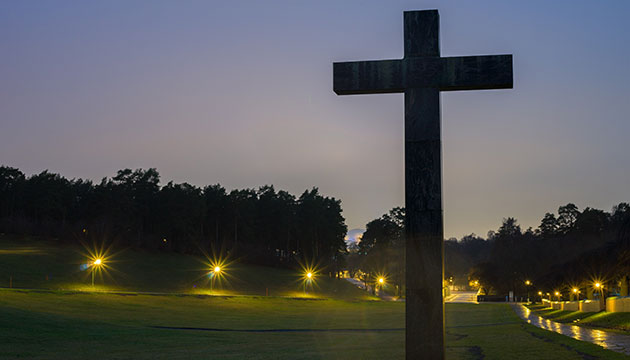(This is sponsored content by Heritage Gardens Cemetery.)
November 1st or All Saints Day is a Christian holiday to honour all the saints. For Catholics, it’s a holiday of obligation. For Filipinos, it is a holiday to commemorate all their family members and friends who have passed away. It is a red letter day on the calendar which means there is no school or work on this day.
Prayers play an important role on this holiday especially the joyful and glorious mysteries of the rosary. A day before, during, and a day after the holiday, Masses are held in churches and cemetery chapels offered by family and friends for the eternal rest of the souls of their dearly departed.
The preparation for this holiday starts in late October when a lot of people troop to the cemetery to clean and oftentimes repaint tombstones to make them look nice for the actual day. They also arrange flowering plants around the graves. On the day itself, some people even spend the night there. They bring tents, food and drinks and set up camp by the tombs of their dead relatives. Some of them believe that the souls of their loved ones will feast alongside those surviving members of the family. To pass the time, they talk about the good deeds of the departed or tell scary stories and play card games but gambling and loud music in cemeteries have been banned by the Philippine government.
During All Saints Day all the graves are decorated with flowers and candles that stay lighted all day and night. This is why there is a spike in the prices of flowers and candles during this holiday. Flowers of remembrance, usually the fragrant azucena, brighten up the grave sites and candles symbolize hope for salvation of souls. Photos of the deceased may decorate some tombs. During the day children go around collecting the melted candles from the different grave sites. These melted candles are then mixed with petroleum and used as floor wax to polish floors at home and in classrooms
This Filipino celebration for remembering, paying respects and honour to the dead is locally called undas. On this day, the different cemeteries are overcrowded with people causing terrible traffic jams on the roads leading to these places as well as around them. Necessary precautions are taken by the government to insure the protection of the citizens. More police officers are deployed inside the cemetery. Medical tents are available to provide first aid assistance in case of accidents as well as lost-and-found facilities for children who become separated from parents. Overnight neighbourhood entrepreneurs set up stalls and kiosks and do a brisk business of buying and selling of snacks, cold drinks, water, flowers, candles, umbrellas and paper fans. Unfortunately, due to lack of rubbish bins in the cemeteries, a lot of trash is left behind. But as the sun sets and darkness envelopes the grounds, the flickering candles give the place a magical and even eerie look.
Although death is supposed to be a great equalizer, the burial sites of the dead in the Philippines reflect the socio-economic status that divides the population. The graves of the poor are simple with only plain markers or a cross. The more affluent ones are buried with more ornate tombstones usually made of marble or granite. The very rich families have huge family mausoleums. There are two types of burial sites: the public cemetery managed by the government, and the memorial parks developed by private businessmen that are planned better and so are more expensive where many of the rich families are buried. Sadly, even in death, equality is elusive in the Philippines.



